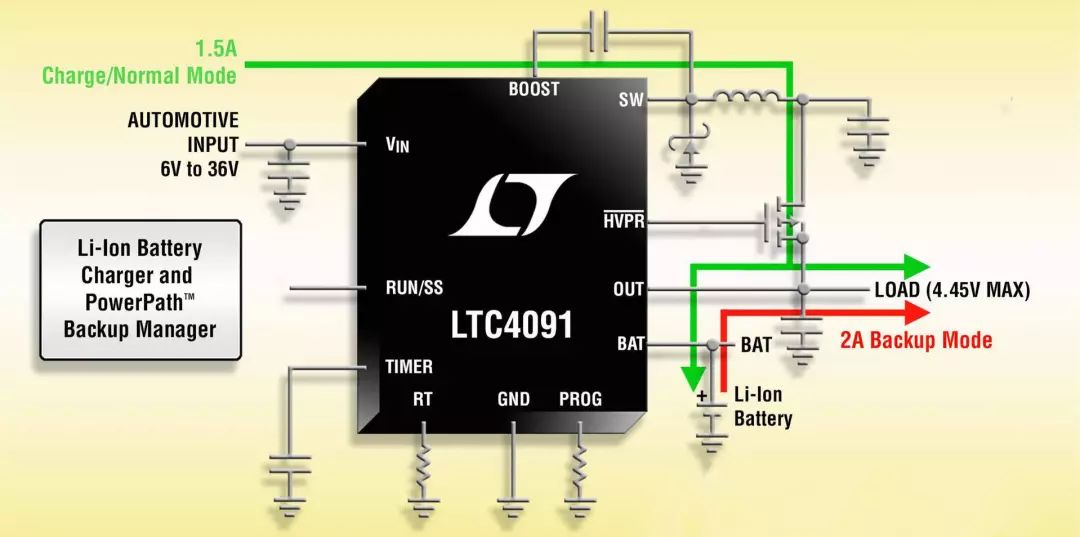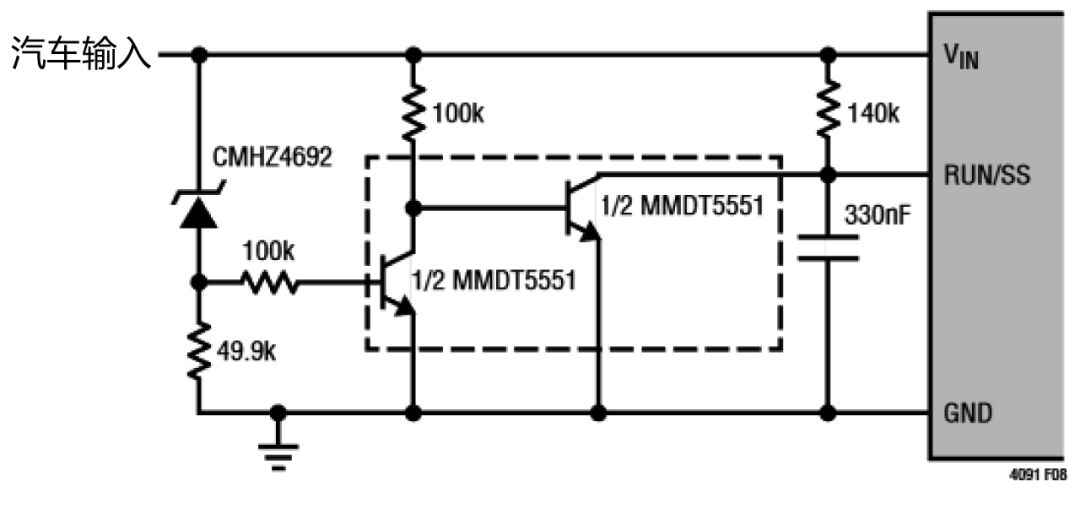Tracking System Needs Integrated Power Management Application Design
The vehicle tracking system is ideal for monitoring a car or the entire fleet. The tracking system consists of automatic tracking hardware and software for collecting data (and, if necessary, data transmission).
Today, we will analyze the "vehicle tracking system."
1
Active tracker and passive tracker
Active and passive trackers collect data in the same way and are equally accurate. The main difference between these two types of trackers is time.
Active trackers are also referred to as "real-time" trackers because they send data over satellite or cellular networks, indicating vehicle location on the fly. The computer screen can show the movement of the vehicle in real time. Therefore, active tracking is the best choice if the company wants to improve shipping efficiency and understand employees’ on-site driving. The active tracker also has a "geo-fence" capability (think of this function as a "force field") that can provide an alert signal when the car enters or leaves a predetermined location. In addition, such systems can help prevent theft of vehicles or recover stolen vehicles. Of course, active GPS tracking devices are more expensive than passive tracking devices and require monthly service fees.
Passive trackers are less expensive, but have limited data storage, but they are smaller and easier to hide. Instead of sending data to a remote location, passive trackers store information on the device. This tracker must be removed from the vehicle and connected to a computer to view the information stored therein. Such systems are suitable for people who track miles for work purposes, as well as companies that want to reduce vehicle abuse. In addition, passive trackers are often used to monitor the personnel's actions (can be imagined as detective work). If passive feedback is not needed, but the equipment data is checked regularly, passive trackers are a good choice.
No matter what type of tracker, it is essentially portable and relatively small in size. Therefore, battery power is required, and a backup function is also required to save data in the event of a power failure. Since charging a battery (usually a single cell Li-Ion battery) requires a high automotive system voltage and a large current, a switch mode charger is preferable because of the charging efficiency of the switch mode charger compared to a linear battery charging IC. Higher, less heat generated in the form of power consumption. In general, the input voltage for embedded automotive applications may be as high as 30 V, some even higher. In these GPS tracking systems, a charger and a common 12 V to single-cell Li-Ion battery (typically 3.7 V) for much higher input voltages (in the event of voltage transients originating from battery drift) Additional protection and some type of backup capability will be ideal configurations.
2
Battery Charger IC Design Issues
Traditional linear topology battery chargers are often valued for their compact footprint, simplicity, and modest cost. However, traditional linear chargers have some disadvantages, including limited input and battery voltage range, relatively high current consumption, excessive power consumption (heat generation), limited charge termination algorithms, and relatively low efficiency.
Switch-mode battery chargers are popular choices because they offer topological flexibility to charge multiple chemically-characterized batteries and have high charging efficiency, thereby minimizing heat and enabling fast charging. There is a wide operating voltage range.
Of course, trade-offs always exist. Disadvantages of switch chargers include: relatively high cost, more complex inductor-based designs, possible noise, and larger solution footprints. Due to the advantages of the above mentioned switch chargers, modern lead-acid batteries, wireless power supplies, energy harvesting, solar charging, remote sensors, and embedded automotive applications are mostly powered by switch-mode chargers.
Traditionally, battery-oriented backup power management systems in trackers consist of multiple ICs, including a high-voltage buck regulator and a battery charger, and all discrete components. This is by no means a compact solution. Program. Therefore, the dimensions of the early tracking system are not very compact. Typical tracking system applications use automotive batteries and single-cell Li-Ion batteries to support storage and backup.
Why does the tracking system require a more integrated power management solution?It is necessary to reduce the size of the tracker itself. In this market, the smaller the size, the better.
Requiring safe battery charging and IC protection against voltage transients, requiring system backup capability to handle system power loss or failure, and relatively low power for General Packet Radio Service (GPRS) chipset Rail voltage (~4.45 V) supply.
3
Power Backup Manager
A solution that meets the aforementioned requirements, integrates a power backup manager, and a charger requires the following features:
Synchronous buck topology for high efficiency
Very wide input voltage range to suit various input power supplies, but also to protect against high voltage transients;
Appropriate battery charging voltage to support GPRS chipset;
Terminate and operate autonomously with built-in charge termination (no microprocessor required)
PowerPathTM control - When a power failure occurs, seamless switching between the input power supply and the backup power supply is achieved. If an input short circuit occurs, this control function also needs to provide reverse isolation;
Backup battery is provided to supply system load when input disappears or fails;
Due to space constraints, it is necessary to provide a flat solution with a small footprint;
Advanced packaging to improve thermal performance and space utilization.
To meet these specific needs, ADI introduced the LTC4091, a complete lithium-ion battery backup management system that is suitable for power rails from 3.45 V to 4.45 V that must be maintained during periods of prolonged main power failure.

The LTC4091 uses a 36 V monolithic buck converter with adaptive output control to power the system load from the buck converter output and supports efficient battery charging. When external power is available, the device can deliver up to 2.5 A of total output current and up to 1.5 A of charge current for a single 4.1 V or 4.2 V Li-Ion battery. If the main input source fails and the load can no longer be powered, the LTC4091 uses an internal ideal diode to supply up to 4 A from the backup Li-Ion battery to the system output load. If an external ideal diode transistor is used, the LTC4091 can provide relatively low power. Limited current. To protect sensitive downstream loads, the maximum output load voltage is limited to 4.45 V. In the event of a power failure, the device's PowerPathTM control provides seamless switching between input and backup power supplies and reverse isolation through short-circuit inputs. Typical applications for the LTC4091 include fleet and asset tracking, automotive GPS data loggers and telematics systems, security systems, and communications and industrial backup systems.
The LTC4091 provides 60V absolute maximum input overvoltage protection, so the IC can withstand high input voltage transients. The LTC4091's battery charger provides two pin-selectable charge voltages optimized for Li-Ion battery backup applications: a standard 4.2 V voltage, and a selectable 4.1 V voltage that balances battery run time and charge/discharge cycle life. Other features include soft-start and frequency foldback to control the output current during start-up and overload, trickle charging, auto-charging, low battery pre-charging, charge timer expiration, thermal regulation and a thermistor for temperature qualified charging Pin.
The LTC4091 is available in a low profile (0.75 mm) 22-pin 3 mm x 6 mm DFN package with back metal pads for superior thermal performance. The device operates over a temperature range of –40°C to 125°C. Figure 1 shows a typical application schematic for this device.

Figure 1 Typical application schematic of the LTC4091
4
Thermal regulation protection
To prevent excessive heat from damaging the IC or surrounding components, if the die temperature rises to approximately 105 °C, the internal thermal feedback loop automatically reduces the set charging current. Thermal regulation prevents the LTC4091 from overheating due to high power operation or high ambient temperatures, enabling users to exceed the limits of power handling capabilities for a given board design without risking damage to the LTC4091 or external components. The benefit of the thermal regulation loop is that the charge current can be set according to actual conditions rather than worst-case conditions, while ensuring that the battery charger automatically reduces the current under worst-case conditions.
5
Traveling through the cold car
Automotive applications experience a drastic drop in power supply voltage. For example, in cold cranking situations, a significant drop in power supply voltage may cause the high voltage switching regulator to lose its regulation capability, resulting in excessive VC voltage and therefore excessively large VIN recovery. Output overshoot. To prevent overshoot when recovering from a cold crank condition, it is necessary to reset the soft start circuit of the LTC4091 through the RUN/SS pin.
Figure 2 is an example of a simple circuit that automatically detects an undervoltage condition and resets the RUN/SS pin, re-inserts the soft-start functional circuit, and prevents destructive output overshoot.

Figure 2 cold car launches through the circuit
in conclusion
The adoption rate of car and fleet tracking systems is rising. Modern trackers have been reduced in size and capabilities, including active data transfer capabilities, to support real-time tracking. In addition, backup functions and lower voltages used to power the GPRS chipset in the system are also required. ADI's Power by LinearTM product, the LTC4091, is a high voltage, high current buck battery charger and PowerPath backup manager that provides thermal regulation and extensive protection, providing a compact, powerful, and flexible form factor for vehicle tracking applications. Chip solutions make the designer's task easier and easier.
Stylus Pen Tip,Stylus Pencil Tip,Carbon Fiber Pen Tip,Carbon Fiber Stylus Pen Tip
Shenzhen Ruidian Technology CO., Ltd , https://www.wisonens.com